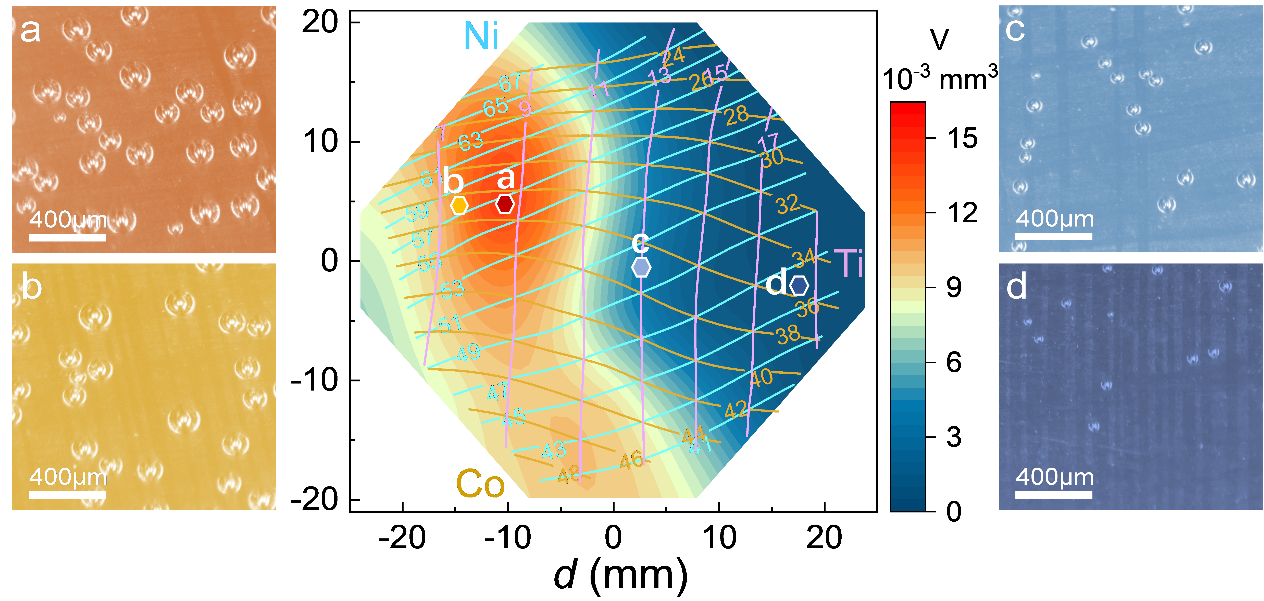Prof. Junqiang Wang’s research group at the Chinese Academy of Sciences’ Ningbo Institute of Materials Technology and Engineering (NIMTE) has created a combinatorial high-throughput strategy to screen superior catalysts for hydrogen evolution reactions (HER).
 The schematic illustration of high-throughput bubble screening method and a corresponding example in Ni-Co-Ti ternary catalysts. Image Credit: Ningbo Institute of Materials Technology and Engineering.
The schematic illustration of high-throughput bubble screening method and a corresponding example in Ni-Co-Ti ternary catalysts. Image Credit: Ningbo Institute of Materials Technology and Engineering.
The study was published in the journal ACS Catalysis.
Catalysts depending on multiple non-noble metals, like cobalt (Co) and nickel (Ni) alloys, have gained wide attention globally in the research realm of HER, or oxygen evolution reaction, due to their excellent features of high catalytic activity, low cost and good durability (OER).
Even so, due to the large compositional space of multicomponent alloys, which necessitates a lot of work on catalyst fabrication and performance testing, both computationally and experimentally identifying the best catalyst for HER remains difficult.
Scientists at NIMTE chose the non-noble elements Ni and Co as the dominant alloy components, with titanium (Ti) as the additional alloy element, on the basis of earlier studies, to tailor the hydrogen evolution. The investigators developed the ternary Ni-Co-Ti film library using magnetron co-sputtering deposition.
To recognize the superior multicomponent alloys used as high-performance HER catalysts, the researchers suggested the high-throughput bubble screening technique. When compared to conventional labor-intensive, time-consuming trial-and-error techniques, the overall screening efficiency increased by more than 10,000 times.
Moreover, a parallel electrochemical analysis was performed, revealing that the Ni56.5Co35Ti8.5 alloy has the best catalytic performance among the broad-phase diagram with 22% < Co <50%, 39% < Ni < 69%, and 5.5% < Ti < 20%.
The researchers also looked into the mechanism and discovered that HER’s high catalytic activity is due to its low atomic packing density and low electron binding energy.
The combinatorial high-throughput strategy presented in this research has a lot of potential for exploring catalysts in higher composition alloy systems and even OERs.
The National Key R&D Program of China, the CAS Youth Innovation Promotion Association, the National Natural Science Foundation of China, the Zhejiang Provincial Natural Science Foundation of China, and the Ningbo 2025 Science and Technology Innovation Project all provided financial support for this research.
Journal Reference:
Liu, X., et al. (2022) Combinatorial High-Throughput Methods for Designing Hydrogen Evolution Reaction Catalysts. ACS Catalysis. doi.org/10.1021/acscatal.2c00869.